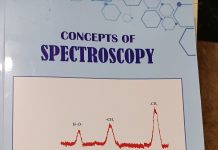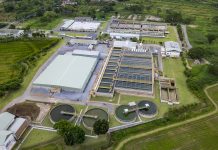Whats In?
Chemingineering – Making Plastics Sustainable – KS Sahasranaman – Independent Consultant
Making plastics sustainable involves developing biodegradable alternatives, enhancing recycling technologies, reducing plastic use, and implementing effective policies. A multi-faceted approach and collective action are essential for minimizing environmental impact.
Transitioning Towards Sustainability: The Journey of the Chemical Sector Toward Decarbonization Using Alternative Resources – Ayan Dasgupta, Fluor
The article explores the chemical industry’s efforts to reduce its carbon footprint by using sustainable resources like biomass and CO2, highlighting the challenges, market trends, and strategies for decarbonization.
Empowering the Hydrogen Economy in Chemical Industries: India’s Green Hydrogen Mission and Global Energy Transition – Priyabrata Mohapatra, Ujjwal Tripathi, Avalon Consulting
Hydrogen is crucial for global decarbonization. India’s National Green Hydrogen Mission aims for five million metric tons annually by 2030, focusing on refining, petrochemicals, and fertilizers.
Walking the Tightrope, Striking a Balance Between Environmental Goals, Economic Realities is a Key for Sustainable Chemistry – Dr. Kamlesh Fondekar, Godrej Agrovet Ltd
This article emphasizes balancing environmental sustainability with economic feasibility through green chemistry, circular economy, and collaborative initiatives for a sustainable chemical industry.
Interview – Ron Beck, Senior Director, AspenTech
He emphasises that digital solutions can help in reducing operating costs and improve production time and manage on time delivery, apart from enabling sustainability and energy transitions
Harnessing Lignin as a Suitable Raw Material for Polyurethane Production – Prof. G.D. Yadav
Polyurethane (PU) is a highly versatile polymer utilized in various industries due to its adaptability in forms such as elastomers, foams, sealants, coatings, fibers, and adhesives. PUs are characterized by urethane linkages formed through the polyaddition reaction of polyols and di – or poly-isocyanates. This structure allows PUs to be tailored for diverse applications including automotive parts, clothing, medical products, and construction materials.
From Protection to Diffusion Intellectual Property as a Tool for Transitioning to a Low-Carbon Economy – Akriti Jain, International Management Institute
Exploring how responsible IP management and strategic collaborations in the chemical industry can drive sustainable innovations, enhance environmental and social outcomes, and support the transition to a low-carbon economy.
Unlocking the Potential: The Role of Carbon Credits and Circular Economy in Climate Action – Manish Dabkara, EKI Energy
The article explores how carbon markets and the circular economy drive climate action and sustainability, emphasizing their evolution, impact, and the chemical industry’s role in reducing emissions.
Microalgae Effluent Treatment – Dr. Ninad Gujarathi, Environalgae
Microalgae-based wastewater treatment is sustainable, reduces carbon emissions, and produces valuable biomass for food, feed, and fertilizer, offering a circular, clean solution for industries. Discusses technology developed by the company.
How Advances in Catalysis Enable Green Chemistry? – B. Viswanathan, Indian Institute of Technology, Madras
This article explains how catalysis enhances green chemistry by improving E-factor, atom economy, yield, and waste reduction, with an introduction to photon-assisted catalysis for sustainable processes.
CEO’s Forum
Chemical Industry Digest quizzed CEOs of leading companies to explore the scope and significance of sustainability. These discussions highlighted the various transitions occurring within the industry, emphasizing how these changes are driving both technological advancements, accelerating R&D and shifts in attitudes.
Dr. Richard Lobo, Tata Chemicals | Anurag Roy, CEO, Astec LifeSciences | Namitesh Roy Choudhury, Vice Chairman & Managing Director, LANXESS INDIA





























